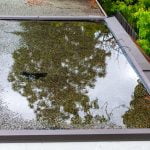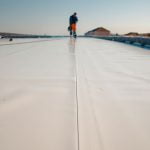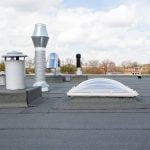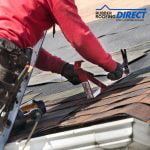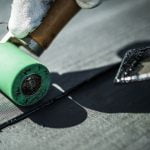Flat Roof Design Considerations
Flat Roof Design: A Comprehensive Overview
Quite rightly, flat roofs are regarded in the industry as highly versatile, allowing architects to consider more design possibilities than any other type of roof form. For example, green roofs can be introduced to create natural habitats or to serve as additional recreational spaces. While architectural designs can be limitless, there are a few considerations to consider when designing a flat roof perfectly.
What you’ll have to consider when designing a flat roof…
Thermal Design
Thermal design focuses on managing the flow of heat and water vapour through the roof structure. This consideration is crucial for maintaining the roof’s performance and its components. Designers must evaluate insulation levels to minimise heat loss and prevent condensation issues.
Insulation
Choosing the right insulation is vital for flat roof performance. It should be compatible with the waterproofing system and meet fire resistance standards. Accessibility for maintenance during and after construction is another critical factor to remember.
Condensation
Understanding condensation is critical to effective flat roof design. The dew point is the temperature of the air, which is fully saturated with moisture. When the warm air meets a cold surface, it’s cooled, and the temperature drops well below the dew point and gives up moisture in the form of surface condensation. This condensing moisture can enter the waterproof membrane and affect the system’s integrity. Appropriate product selection is key.
Deck Types
The materials used for the roof deck should comply with standards like BS:6229 2018. Appropriate materials ensure durability and performance, so designers must consult relevant guidelines.
Creating Falls for Drainage
Building regulations require that flat roofs facilitate proper rainwater drainage. Following BS 6229 & BS 8217, a minimum fall of 1:40 is necessary to ensure adequate water runoff. This applies to both roof areas and internal gutters.
Drainage Systems
Flat roofs must incorporate efficient drainage solutions through internal rainwater outlets, downpipes, or external guttering systems. Even small roofs should ideally have at least two drainage points to mitigate the risk of blockages.
Fire Resistance
Building regulations dictate fire safety standards for flat roofs. Testing under TS 1187 assesses the performance of the complete waterproofing system against external fire penetration and flame spread, ensuring safety compliance.
Wind Load Design
Calculating wind load is crucial for flat roof integrity. It helps confirm that the roofing system can withstand pressure and uplift forces based on the building’s design, height, and location.
Locating Rooftop Equipment
For optimal integrity, rooftop equipment should be placed directly on the waterproofing membrane to minimise interruptions that could lead to water ingress. Equipment is often supported by paving slabs with protective layers underneath.
Foot Traffic and Access
Regular foot traffic on flat roofs necessitates protective measures to safeguard the waterproofing surface. Properly defined walkways and protective materials are essential for maintenance access and fire escape routes.
Rooflights
Incorporating rooflights into flat roofs can significantly enhance natural light within the building. Various designs and glazing finishes are available, but specifications must align with relevant building regulations.
Edge Protection
Safety is paramount, especially when accessing flat roofs. To ensure safe access for maintenance or emergencies, architects should consider edge protection when designing a flat roof, whether with a designed parapet, guard rail at the roof edge or a permanently protected walkway.
Assessing Refurbishment Needs
Before starting a roof renovation project, thoroughly appraise the existing roof and identify any areas needing repair to unravel the best next steps and approach for remedial actions.
Overlaying Existing Waterproofing
To overlay an existing roof system, the existing waterproofing must be sound and suitable for the new overlay. Ensuring the underlying structure is dry and free from damage is essential for a successful application.
Upgrading Insulation
Enhancing thermal insulation during refurbishment reduces energy consumption and benefits the environment, making it a sensible investment for any building owner.
In summary, flat roofs offer a multitude of advantages and design opportunities. With careful consideration of thermal performance, drainage, fire safety, and access, they can transform new builds and refurbishments into practical and aesthetically pleasing spaces.



